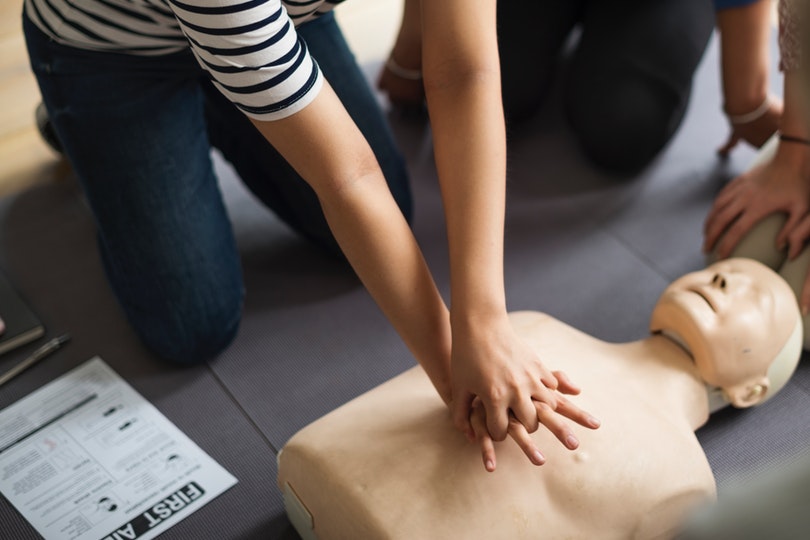So you wish to establish an office safety training program. Okay, you do not a lot want as you are required to. Like the majority of entrepreneur. However you’re not the type to disregard things like employee safety. Due to the fact that you know well that training for security is the most economical method to safeguard your most precious asset: your workforce.
If the very believed of reading hundreds of pages of OSHA guidelines puts you to sleep –-- you’ve come to the ideal location. We’ve read them all, thank you, coffee! And have a battle-plan to begin tackling this relatively impossible objective –-- developing, and successfully providing, an excellent office safety training program for your company.
Know Your Opponent –-- What is Workplace Safety Training?
Workplace safety training is a process that aims to provide your workforce with understanding and skills to perform their work in a method that is safe for them and their co-workers. In addition, a reliable office safety strategy consists of guidelines and guidelines to recognize risks, report them, and deal with events.
You require to motivate a fantastic occurrence reporting culture so that you can effortlessly create a more secure work environment and can determine how your company can continuously enhance the office environment. When a new occurrence occurs, you need to have a quick method to pass on the message to all your employees to avoid the incident from happening a second time. Staff members require to be able to quickly access old threat reports so they can discover on-the-job. You should have the ability to alert and inform your employees to a hazard PRIOR TO it occurs. When one takes place, you need to be able to deal with the situation DURING the incident. And after that AFTER the occurrence, you have to be able to quickly let the remainder of the team understand, like about the damp flooring so slipping can be avoided. There is a lot that enters into protecting your workers so you must have a stable procedure in place.
As an employer, it is your legal (and ethical) obligation to instruct your workers how to carry out in a safe and healthy manner prior to they even start to work. Safety training is an essential part of the staff member onboarding process however it likewise needs routine refresher & courses for compliance (and effectiveness). Not only because employee awareness decreases over time, but likewise since safety protocols change to keep up with changes in devices, materials, and functions within the company.
Why You Required Workplace Safety Training in Your Organisation
Beyond the apparent reasons –-- regulation and moral duty –-- there are plenty of benefits to investing more time and believed in a well-planned work environment safety training program. Here are a couple of:
-
Lower insurance premiums
-
Less performance loss due to health problem or injury
-
Higher staff member fulfillment
-
Decreased worker settlement for medical leave due work-related injuries and diseases
-
Protection from liability suits
-
Future event prevention.
However odds are you’re already convinced, and read this post to find out how to make your security training program an outstanding example of company diligence.
Training Beyond Guideline
Not all workplace security training courses are the exact same. For different jobs and industries, there are different safety training requirements, both in material and training frequency. So there’s actually no one-size-fits-all & when it pertains to workplace security training.
The regulative needs of OSHA and state health and safety authorities are the bare minimum. When planning your work environment security training program, your goal should be to reduce events, make the most of awareness and awareness, and keep your employees healthy, happy and efficient. Not simply comply with regulative demands.
Steps to a Reliable Office Safety Training Program

-
Determine the requirements of your business, possible hazards, and training goals. Then, evaluate previous events and common industry dangers. Find out which problems require to be dealt with through training, and which have other options like protective equipment or caution signs
-
Include your workforce in establishing, carrying out, and enhancing the training program. The contribution of supervisors, managers and employees is vital. They know the best understanding of how work finished and where dangers to their safety and health might be hiding.
-
Create modular training and testing procedures that can be applied to each function in business according to policies. For example, knife safety handling directions are the very same for a waiter and fry cook, while fire safety protocols may be different for each.
-
Managers and supervisor of training in the safety requirements of their teams. This will allow them to recognize problems with worker compliance with security guidelines.
- Consist of communication channels for risk reporting in your training, so employees know who to get in touch with and how to avoid a possible accident.
-
Check your workers with tests, surprise examinations. These can assist you figure out how efficient your office safety program is prior to a mishap forces you to discover it is not.
-
Supply continuous and simple access to safety training material to let employees refresh their memory when essential. For example, a staff member who was advised on the safety requirements of operating a specific machine 6 months back, and hasn’t touched it given that? Is more most likely to stay safe if they have the material of the training course easily offered for him to review.


